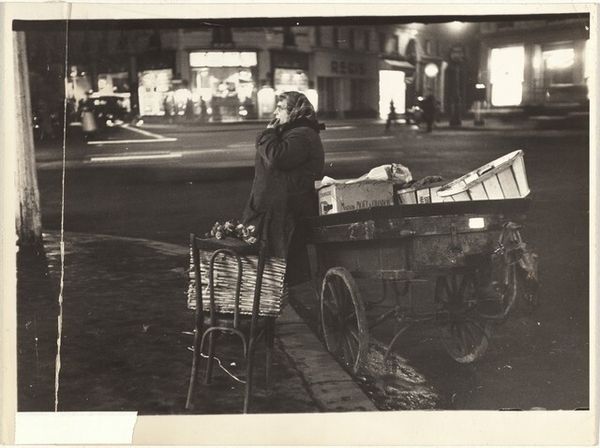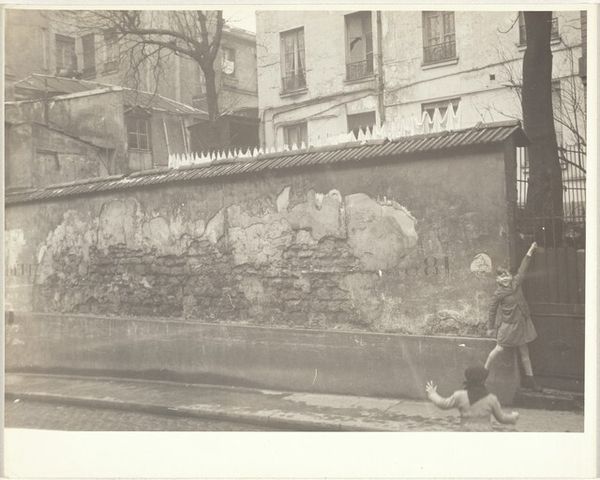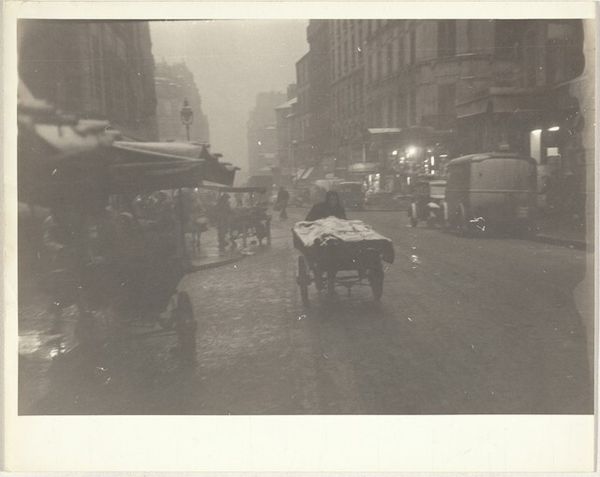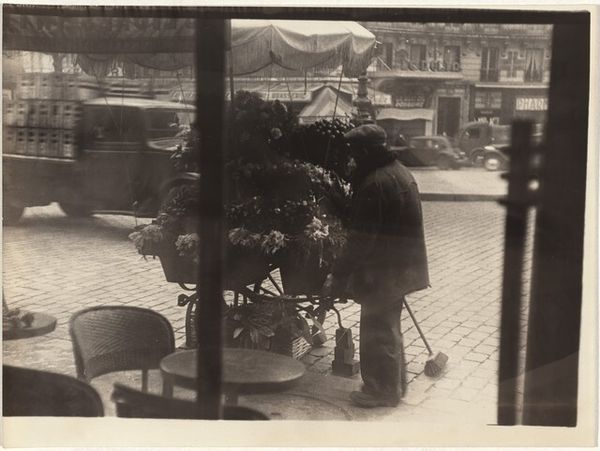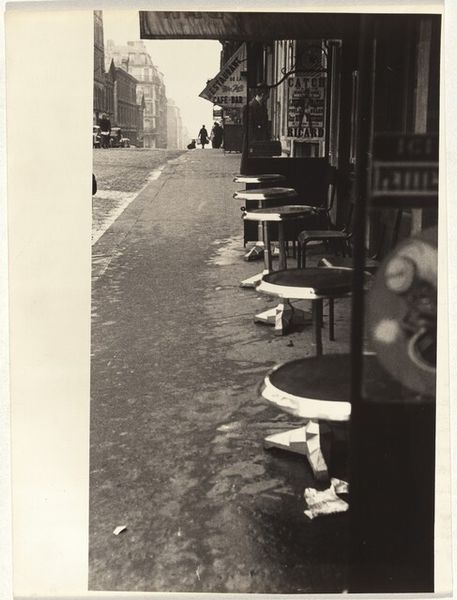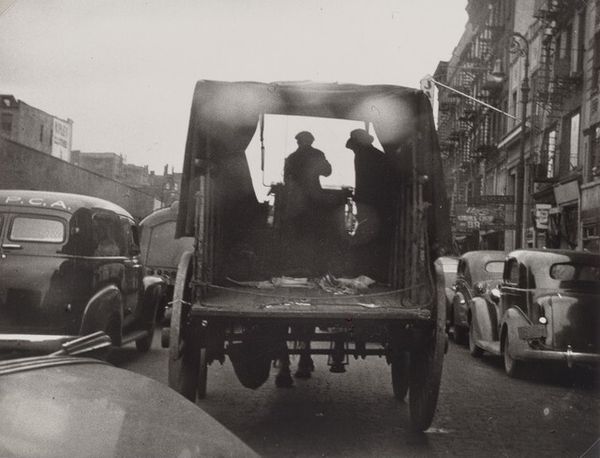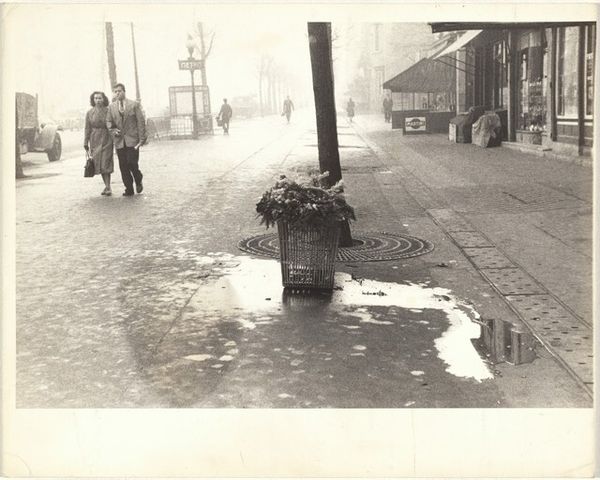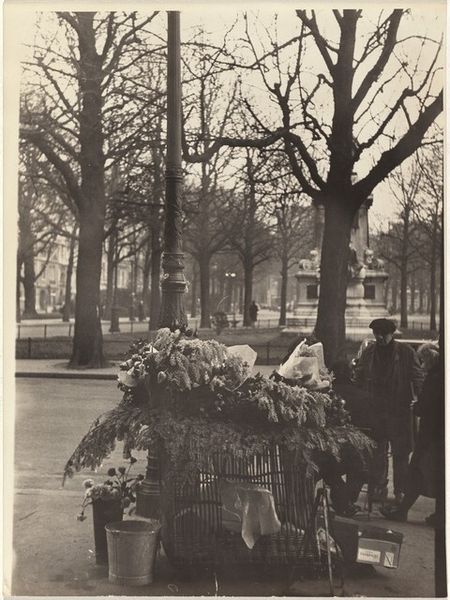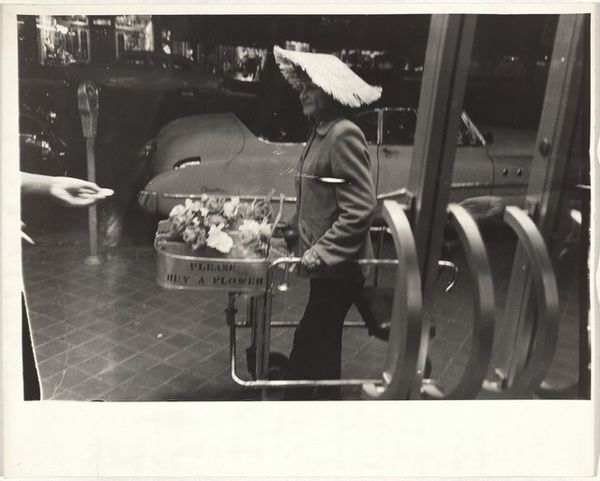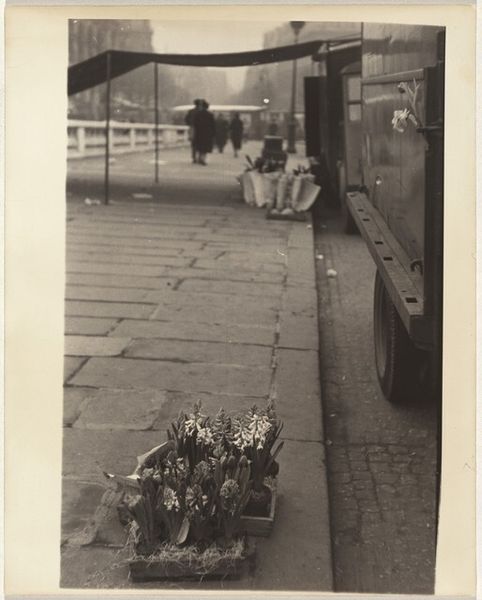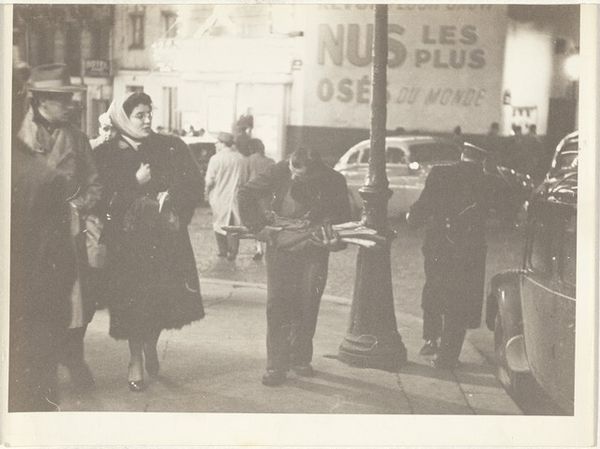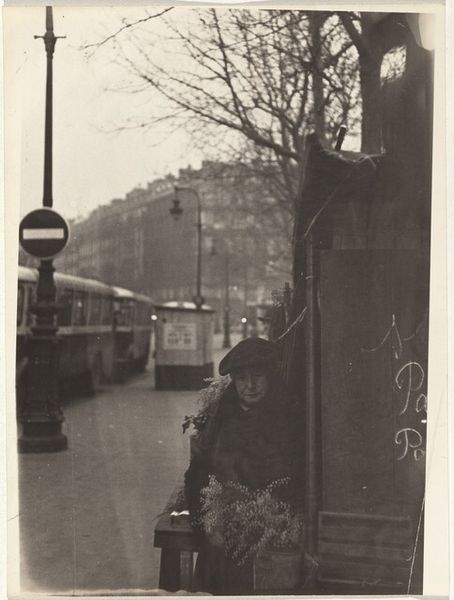
print, photography
#
film photography
# print
#
landscape
#
street-photography
#
photography
#
cityscape
Dimensions: sheet: 17.8 x 23.8 cm (7 x 9 3/8 in.)
Copyright: National Gallery of Art: CC0 1.0
Curator: Looking at this print by Robert Frank, titled "Flower cart, Paris," captured in 1951, one immediately gets a sense of the urban grit softened by natural beauty. What are your initial thoughts? Editor: The stark contrast grabs me first—the darkness of the foreground vehicle almost consumes the frame, yet it pushes the eye toward the delicate floral arrangement in the cart. There’s a deliberate tension between shadow and light, mass and fragility. Curator: Absolutely. Frank, during this period, was deeply involved with documenting everyday life, moving through the social landscape and how individuals interacted with post-war society. Here, it seems like the flowers serve as both a product and a signifier. How are they being traded, under what conditions, and who profits? Editor: Precisely. Structurally, the composition is built upon a series of receding planes—from the immediate dark mass, through the lighter floral display, the car, and then to the blur of the street itself. These horizontal layers are sharply defined. And those vertical lines created by the architecture create a rhythm of repeating forms. Curator: It begs the question of who is allowed to enjoy beauty, who is allowed access to that ephemeral good when daily life in a recovering post-war city has clearly continued with such rigor. And I can't ignore how this image speaks to labor. Who cultivated these flowers, under what circumstances, and what is the final destination for them? Is it a funeral or celebration? Editor: And the tonal range; it's masterful in its simplicity. Each tone plays against another: that glossy dark auto, and the way its presence highlights that rustic flower cart… These opposing textures reinforce a thematic tension, too. I would go so far as to claim this juxtaposition creates a symbolic dialog. Curator: I can appreciate your attention to contrasts, though, for me, Frank is subtly pushing for a social commentary regarding accessibility of beauty within rigid hierarchies. Editor: In conclusion, the framing allows Frank's image to pose powerful formal questions of the photographic image. The visual juxtapositions draw our eye to that delicate collection of flowers, but those are also offset by heavier symbolic elements of a dark machine against a grey, gloomy city-space. Curator: Seeing this again only reasserts how powerful photography can be as a documentary method. Frank is showing us not just a scene but revealing structures that govern human relations, commerce and exchange in Paris during this post-war moment.
Comments
No comments
Be the first to comment and join the conversation on the ultimate creative platform.
